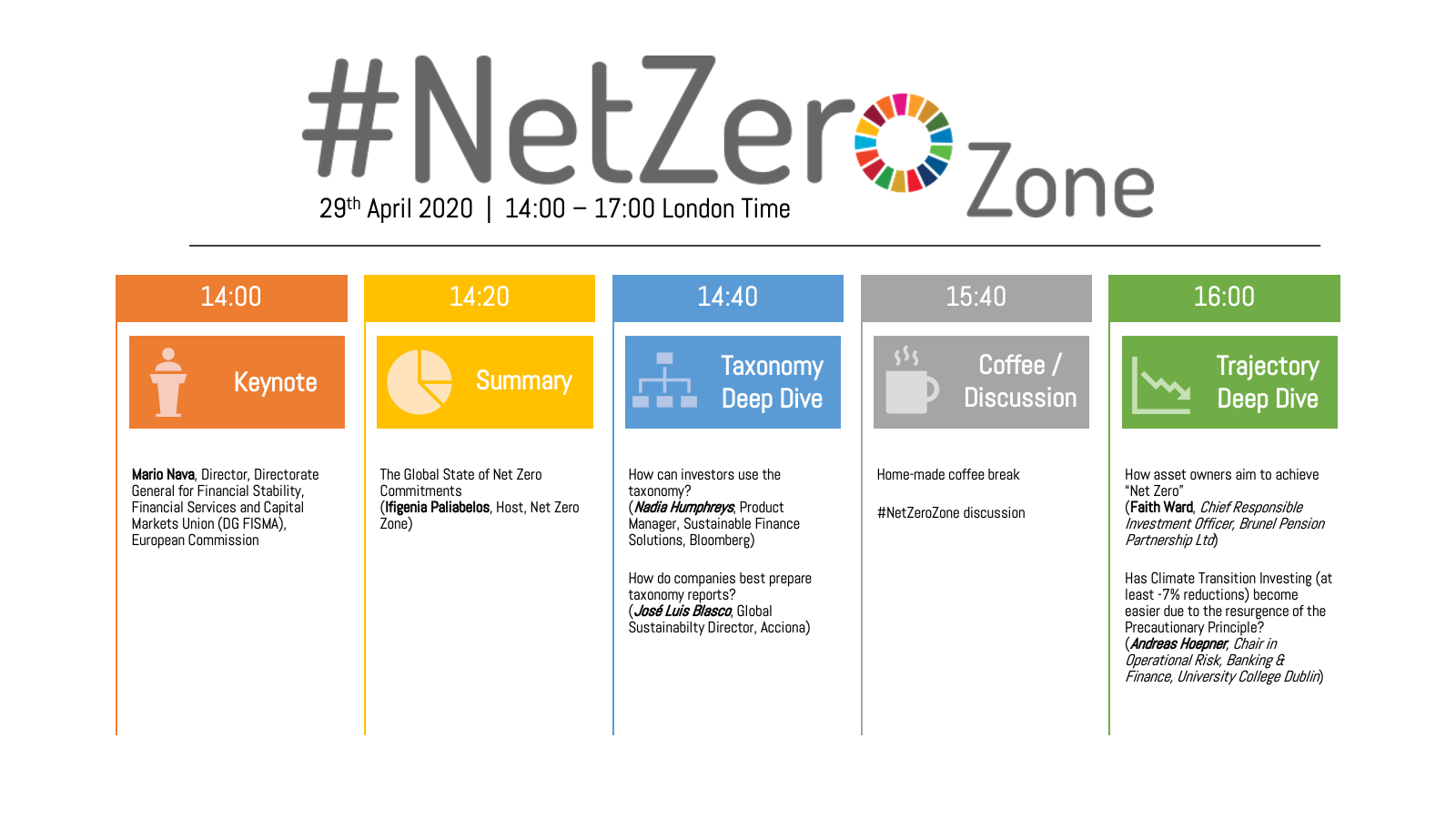In true Net-Zero fashion and a testament to our times, we held our first-ever digital conference on April 29, 2020. For the first in a series of events, we were joined by several key players within the sustainable finance space.
The talk opened with a key-note speech from Mario Nava of the European Commission, and a look to the future. Nava emphasised the importance of data, and of SDG and Net-Zero aligned investment strategies, in the rebuilding of financial markets post-COVID. He voiced caution over practitioners not repeating the mistakes of the past, highlighting the need for a green recovery, as ‘[the planet cannot be put] in a freezer for the next 5-10 years’. His overall sentiment of optimism and opportunity was echoed throughout the afternoon.
Ifigenia Paliabelos, our Net-Zero Zone host, followed with a summary of the key findings of her, Banhishikha Chakraborty, and Andreas Hoepner’s research into companies and their Net-Zero commitments. They found that over 20 per cent of the market cap of MSCI World was engaged in some form of Net-Zero commitments, with the consumer discretionary sector and utilities, in particular, coming out on top. Most interestingly, within the oil sector Repsol outperformed its peers with a Net-Zero commitment for scope 1, 2 and 3, with post-tax impairment.
The conference then took a deep dive into how practitioners can and are incorporating the EU Taxonomy, from investors to companies alike.
Nadia Humphreys from Bloomberg began by succinctly condensing 600 plus pages of the EU Taxonomy into a couple of slides, and highlighting how investors can utilise data to incorporate this at both the company and portfolio analysis level in a 5-step process. As investors begin to grapple with incorporating the EU Taxonomy, this type of guidance is invaluable.
As a pioneer in sustainability, it is not surprising that Acciona was one of the first companies to produce a Taxonomy aligned sustainability report for FY2019. During the conference, José Luis Blasco, Acciona’s head of sustainability, took us through the process of the Taxonomy in practice. Highlighting where Acciona met the 6 environmental objects, the do no significant harm objective and the minimum social safeguards, and how they began to measure these objectives to produce their report.
Finally, Andreas and Faith took us on a trajectory deep-dive, discussing the technical requirements of incorporating EU TEG guidelines and Net-Zero commitments more broadly.
Andreas Hoepner, from the University College Dublin, deftly guided us through the how-to’s of climate transition investing. Highlighting how the two benchmarks created by the TEG; the ‘EU Climate Transition Benchmark’ and, the ‘EU Paris-aligned Benchmark’, can help practitioners realise Net-Zero. Emphasising the crucial importance of the precautionary principle in facilitating a move towards Net-Zero, especially when using GHG estimation data.
Faith Ward from Brunel Pension Partnership spoke from an asset owners perspective on the barriers, opportunities and surprises she has faced creating BPPs climate change policy, for a financial system which furthers a low carbon future. She expressed surprise at the reach of Brunel’s 5P Approach to Climate Change with, amongst others, the Science Museum utilising the approach to screen potential sponsors.
Overall, the conference created a space to take stock of how practitioners are promoting Net-Zero commitments, aligning with the EU Taxonomy and generally supporting a sustainable future.


